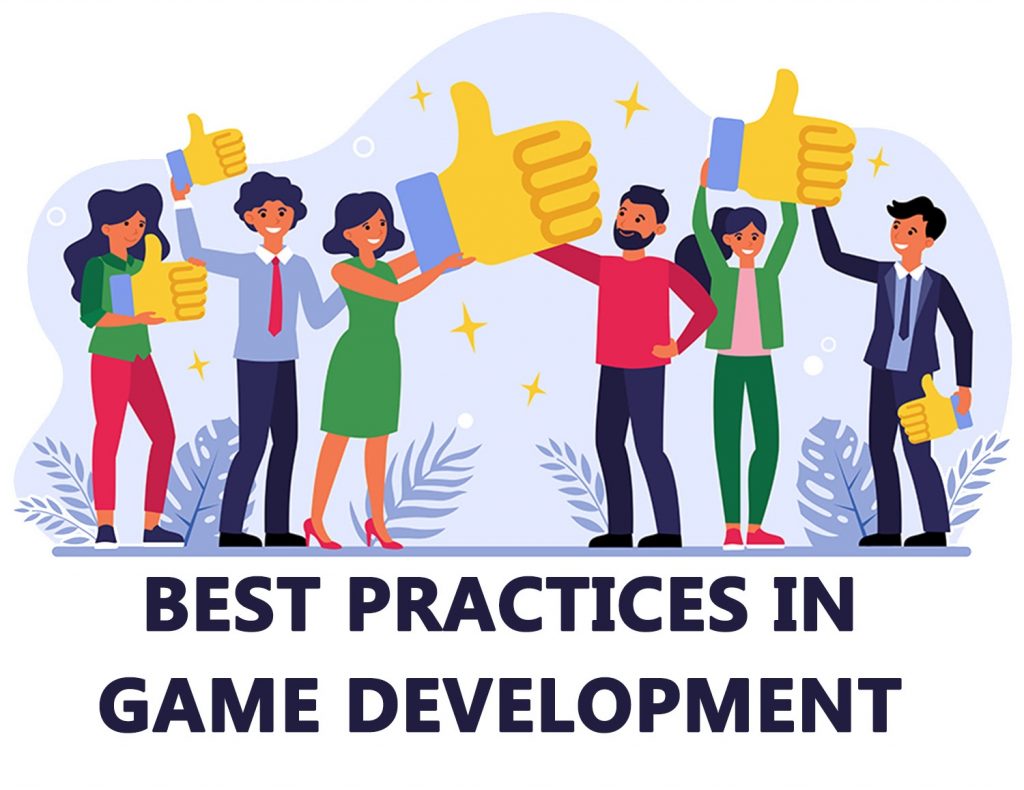At some point, some projects require the best practices in game development to ensure great end results. It is not always enough to hire smart developers and creative designers, put them in the same room, and hope to get impressive results.
To organize the whole process well, you need to learn the top secrets of success from leading companies. These are Epic Games, Electronic Arts – those who are proud of world-famous projects. They went into the industry to create revolutionary games and technologies for the future. Innovate based on the example of the largest companies in the industry!
We managed to contact a leading European game art company that has a good track record of outstanding entertainment projects. Most of them are developed in partnership with top gamedev companies. They all use effective game development patterns and best practices. What kind? Find out below!
Best Practices in Game Development
What to do when:
- the complexity degree is increasing,
- time to market is shortened,
- requirements get tougher?
This places a heavy burden on the game development company and its specialists. So, start working smarter by using the following best practices in game development:
Iterative or Sprint Development
This is a key practice used in Agile methodologies to simplify the project workload. This is especially true when it comes to large ones. It involves dividing the development cycle into several mini-projects called iterations or sprints. Usually, they are limited to a certain period of time – 2 weeks.
The main focus of this practice is that during each iteration/sprint, the team provides an executable. This allows you to assess the quality and progress of the project.
As a result, it provides a lot of flexibility for the team and ultimately for the final product, as it can be changed at any time. Working within sprints, the chances to get a satisfactory end product is higher.
Requirements Management
This practice has a large impact on the success of a development project. Requirements are specific conditions under which certain work must be performed (in this case, developing a game). It is an ongoing process. So requirements can be formulated by many stakeholders. They are customers, partners, sales representatives, product managers, etc.
This enables the team to document, validate and meet the needs and expectations of all internal or external stakeholders. Moreover, when all of them are well aware of the requirements for them and the project as a whole, progress grows rapidly.
How to manage requirements effectively? Here you are some helpful tips:
- Collecting requirements in a single data repository, preferably according to the strictest security standards;
- Classify requirements by groups (types, features, and other specifications);
- Verify requirements using a traceability matrix as the best way to investigate the impact on other requirements;
- Assign attributes to each requirement to identify unwritten gaps in stakeholder perception (priority, difficulty, cost, etc.)
- Set the status of the requirement for better real-time project management, etc.
Consistent requirements are extremely important when certain changes occur. This fact logically moves us to the next common practice among the leaders of the gaming industry.
Change Management
No one is safe from project changes, especially when it comes to fast-paced game development. The continuous evolution of technologies, response to crises, changes in consumer demand, pressure from competitors. All this takes place and makes the team of developers adaptable.
The key to effective change management practice is to support everyone to successfully implement changes. They are supposed to contribute to successful and tangible business results.
Change management occurs at 3 levels:
- Individual. The degree to which humans change their behavior and introduce new processes has a significant impact on the overall performance of the company.
- Organizational. Identifying the groups of people who need to change, and in what way.
- Enterprise. Changes are embedded in the roles, structures, processes, projects, and leadership qualities of the whole company.
Quality Control & Quality Assurance (QC/QA)
Both terms are related to the guarantee of quality. So, if you are aiming to ensure product quality to end users, focus on adhering to quality management standards – ISO 9001. There are standards based on ISO 9001 but industry-specific, for example, ISO/IEC/IEEE 90003:2018.
This practice focuses on 3 aspects (enshrined in the ISO 9001:2015 standards):
- All processes are clearly defined and well-managed to ensure that products and services meet consumer expectations;
- All functions are within the competence of each specialist (based on their skills and knowledge);
- There are other elements (such as staff and its motivation, team spirit, corporate culture, etc.) that contribute to the final quality.
Conclusions
As you can see, game development is full of best practices to successfully create high-quality products and deliver them to a wide audience. At https://kevurugames.com you will find impressive artworks used in trendsetting projects like Fortnite and many others. Their business processes are based on the best game development practices but are also adapted for each project separately. Follow these AAA standards and succeed in any stage of development!
